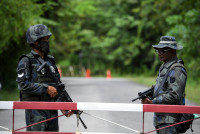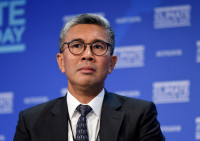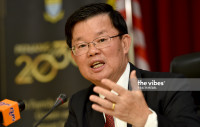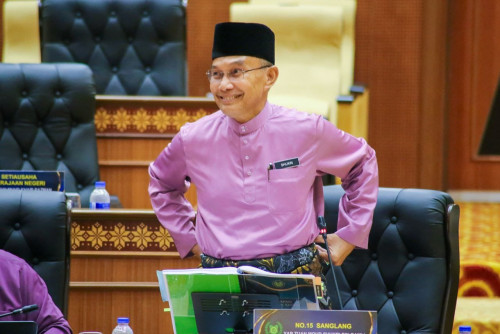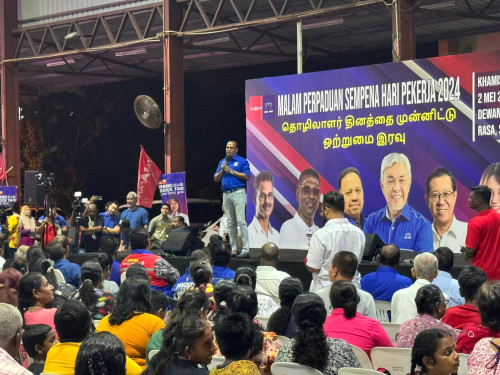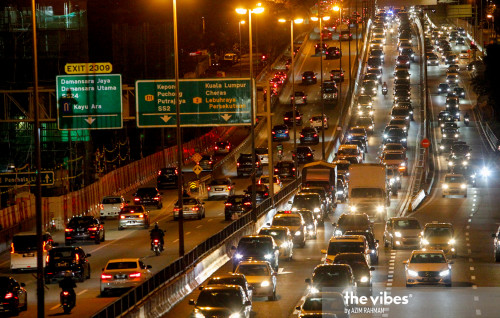SINGAPORE President Halimah Yacob’s official visit to Malaysia, on the back of the recently concluded visit by Prime Minister Datuk Seri Anwar Ibrahim to the republic, signals a common intent and geopolitical concerns by both countries in facing renewed security and economic threats.
Throughout the 58 years of diplomatic relations, ties between the two have gone through ups and downs, swayed by different preferential policy options by different leaders and contextual realities.
Predominant parameters to the bilateral importance remain security- and economic-related in nature, further reinforced by threat and risk settings on the ground that require integration and systemic interdependence on one another’s capacity, whether by default or forced.
Despite the conventional diplomatic projection and show of intent that always revolves around economic cooperation; people-to-people exchanges and enhancement of shared interests including green energy and digital economy; and social cohesiveness, the underlying critical factor remains one that is geopolitical and security-related in nature.
Chief to this pursuit will be securing the ultimate interests of both countries, which remain concerns on security and assurances in both traditional and non-traditional spectres.
Singapore wanted a stronger Asean as it indicated throughout the visits, and wants more cohesion to promote regional stability and security amid the deteriorating security climate.
The republic has always been cognisant of its geopolitical reality and vulnerability, a fact further underlined by the twin implications of the pandemic and the war in Ukraine that have ravaged supply chain resilience and created a scramble for food and energy security.
Devoid of the most critical basic resources key to its survival, Singapore sees Malaysia as the most crucial player in ensuring food, water, and resource security – which must be meticulously nurtured to ensure the least capacity of supply assurance, at least in the medium term.
This is reflected in the strategic moves to systematically enhance ties with Putrajaya and the willingness to tone down responses to the Pulau Batu Puteh conundrum.
Apart from urgent yearning for assurances in basic resources, the predominant concern remains the hard power threat that is engulfing both players and the region – as both face a common threat they both realise is far bigger than the current thorny disputes between them.
This alone compelled both countries to supersede the sensitive bilateral issues that have plagued the ease of their integration of approaches and also hampered their future potential in bolstering joint-deterrence capacity.
Malaysia remains more important for Singapore’s long-term survival on many fronts, and Singapore’s cost-benefit calculations concluded that continuing to harp on sensitive disputes – including Pulau Batu Puteh – will only risk diminishing returns from a potentially more irritated Malaysia.
In short, Singapore’s survival concerns vastly supersede the geopolitical returns from this issue, what more with Malaysia playing a central role to its survival calculations. Thus, it will want to capture Putrajaya’s goodwill in reaping the security benefits.
The most critical factors for the ties moving forward are the conventional security threat and changing geopolitical domain that both face. Singapore remains ahead in strategic calculations, being wise and pragmatic in its threat orientation and future long-term agenda setting that is not strictly tied by past norms of sheer neutrality – unlike Malaysia.
The city state is both realistic and future-driven, knowing that it has to rely on external powers for security and survival, and it needs the United States and the West as its core defence support while Asean is relied on as for its supplementary leadership role and conflict-prevention mechanism.
Singapore’s long game in its strategic preparations is evident in its calculations – seeing that China’s long-term staying power both in economic and military might is not guaranteed, with internal setbacks and cracks that threaten to derail consistency and resilience.
The republic has thus played the long game by placing more bets on the West, wary of Beijing’s slowing economy and future unpredictability in building a regional or global order that is uncertain in its direction.
Singapore calculates that it is best to remain with the established order, further taking into account the strategic moves by Beijing to open more alternative trade routes that will sideline Singapore’s geostrategic importance.
Through the Belt and Road Initiative and other tie-ups, new trade routes being pursued – including the Sunda Strait; railways, ports and land connections in Pakistan, Sri Lanka and the Middle East; and the prospect of the Northern Sea Route in the Arctic – would all potentially gradually supersede the importance and reliance on the Malacca Strait.
This would potentially diminish Singapore’s economic and geostrategic advantage, on top of other moves by neighbouring players including Indonesia with its Nusantara strategic card. All these are projected to further diminish Singapore’s regional voice, and the city state is now scrambling to maintain its presence and role.
Economically, it will still rely on China in the near future but the economic transition and need to break away from its current economic-maturity trap would leave Singapore still aligned to the value-based and principle-driven system of stability, predictability, and consistency that is now sustained by the United States and the West.
Singapore received the positive implications from China’s slowdown and the crisis of confidence in Hong Kong’s economic and financial dominance – being at the receiving end of the exodus from both.
It is ready to project a future region that is not fully China-centric, and will try to preserve all the current foundational indicators of what makes Singapore globally respected as a stable and matured financial centre and economic player in the first place, which rest on a stable rules-based order.
Being strategic and pragmatic, Singapore is assiduous enough to balance both and would avoid antagonising Beijing as it still looks to it as an important economic lifeline, but will depend on the West for survival and long-term resilience.
Singapore knows that any real-time conflict in the region or a potential full fallout from an invasion of Taiwan will eventually mean a mobilisation of US forces from the bases Washington is currently accessing and using in Singapore.
This would result in Singapore eventually being either directly or indirectly dragged into the conflict, risking being seen by Beijing as a threat during wartime. Thus, whatever the future may hold, in the eventuality of a full-scale war or conflict Singapore will be drawn to an opposing path with China regardless, and various strategies have been drawn to prepare for this eventuality.
Singapore remains the perfect connecting dot and vital chain link for the West’s containment capacity, linking it from Northern Australia – with America’s growing military presence and base there – all the way to the recently agreed return of US presence in the Philippines’ Subic Bay and other bases there.
Singapore remains a sitting duck to external threats, and therefore sees the trilateral security pact between Australia, the United Kingdom, and the US, or Aukus, as a timely needed deterrence measure – and would be looking to further deepen Western security assurance and alliance.
Malaysia should capitalise on this, and treat Singapore as a complementing deterrent force, where greater common threats should transcend normal security and disputes with the republic.
The reality remains that any security threat or fallout in either Malaysia or Singapore will have a direct impact on the other, regardless of how much one tries to shield or manoeuvre carefully. Singapore holds the key to attracting further defensive and security assurances from the West, and providing integrated capacity with sustaining arguments on shared interlinked vulnerabilities will inject further security assurances and lifelines.
All these, are of course bound by Malaysia’s readiness and strategic future plan in how it will manage its defence and security approach to face the probability of a full-blown conflict in the South China Sea or Taiwan, now increasingly being seen as a matter of when, not if.
Singapore and the West are also wary of Malaysia falling to the domino effect during a real-time war, and will need Putrajaya to be secure as a bankable first line of protection in securing Singapore, reminiscent of World War II where the British concentrated its last-stance capacity in Singapore to thwart the Japanese onslaught that had swiftly rampaged the peninsula.
There is no hiding that both still harbour mistrust and wariness towards each other’s pursuit for strategic security and power, especially in protecting themselves from the other’s potential threat of escalation.
However, this remains remote and any depth or potentiality of this will remain minimal as compared to the overwhelming returns of bolstering both sides’ joint interoperability and deterrence capacity in various domains, particularly economic and security.
The Five Power Defence Arrangement remains an ever more strategic and vital tool to integrate better understanding and joint togetherness in repelling common threats to both Singapore and Malaysia.
Mutual mistrust, wariness, and lingering sensitive disputes must be wisely managed and reduced to build more in-depth and pervasive security interdependence and joint-deterrence capacity.
Malaysia is relied upon as a crucial avenue for human capital to fuel the demands of Singapore’s new service economy, and will continue to be a consistent source due to the lure of high-paying jobs with assured living standards and safety – which have managed to be a magnet to Malaysian professionals for decades, most times at Malaysia’s brain drain expense.
Putrajaya is also vital as Singapore’s second front for the social progression and satisfaction aspect – providing its citizens the needed psychological opening to break from its almost robotic and systematic working and lifestyle environment through social and tourism activities – a growing facet that both realise is crucial as a fundamental factor in the ties.
Singapore needs Malaysia’s voice to further strengthen regional leadership and its expertise in counterterrorism capacity to help the republic confront the issue head on with better preventive capability.
For Malaysia, Singapore is crucial predominantly for its economic importance, being its second-largest trading partner and vice versa. Increasingly, however, the republic is gaining importance in the spheres of security and geopolitical calculations that will have a direct impact on Putrajaya’s security climate.
Malaysia can also benefit from the spillover effects of Singapore’s soft-power sway and its ability to capitalise on its importance to the Western world.
Singapore is increasingly crucial in other domains, particularly for its established security and geopolitical advantage and is seen as the strongest beacon of Western deterrence capacity and allied partnership, together with Manila.
Having the advantage of a vibrant and matured international financial system and established trade point which served as a global magnet of growth and connectivity, it will serve Malaysia wonders through integrated and cascading impact should both increase joint capacity and reduce mistrust and wariness for the bigger threat picture.
It is high time both countries reorient their approaches to one another, and look at each other as critically vital partners facing shared common threats in the long-term setting. Whichever way it might go, both are too intertwined to be free from one another’s failed approach or miscalculations in its own security or economic pursuit and agenda.
It is finally time to break free from past traps and policy dogma and to start to reduce and sideline any mistrust – and to transcend present disputes in order to project a united front.
Both must capitalise on each other’s unique strength, position, and advantage, as both are facing a race against time to transform their economic direction, national survival, and interests, of which the interdependence of both countries remains indispensable. – The Vibes, March 23, 2023
Collins Chong is a foreign affairs and strategic analyst at Universiti Malaya



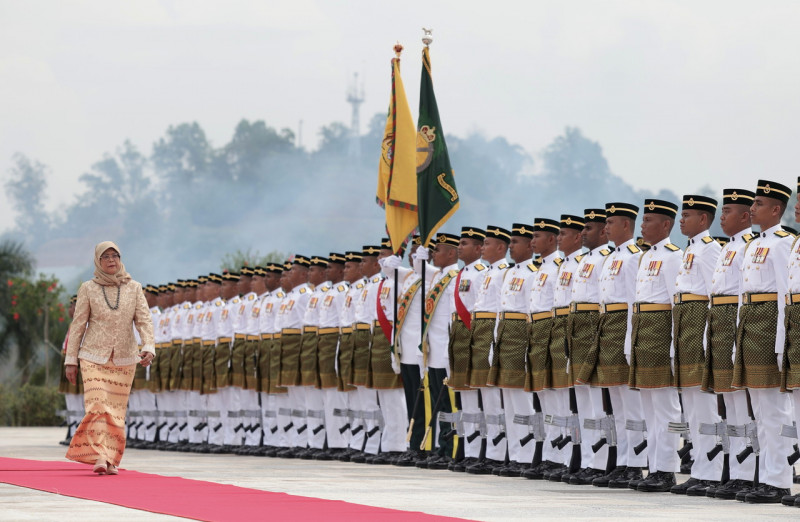

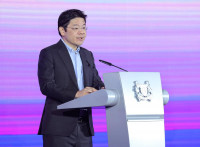



_pic._Credits_Unsplash_licence..png)
